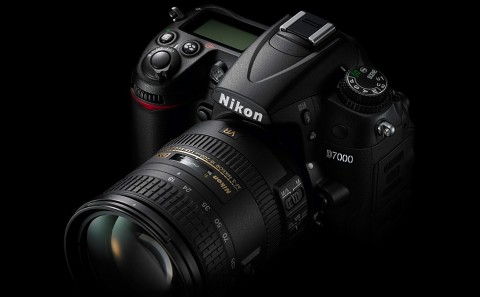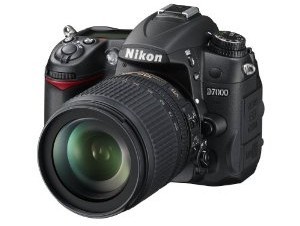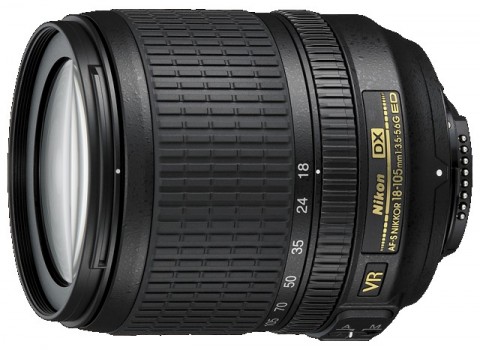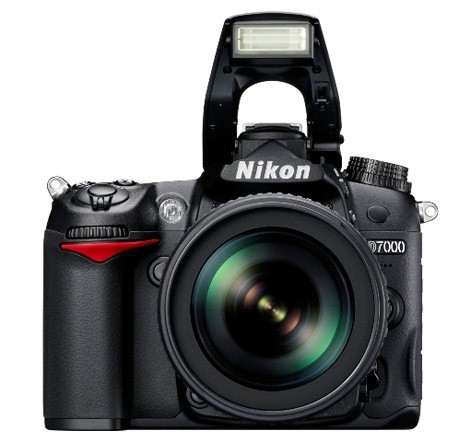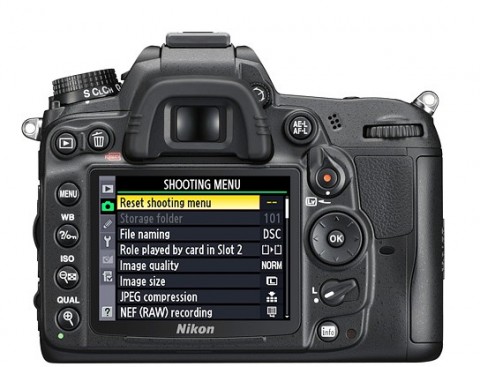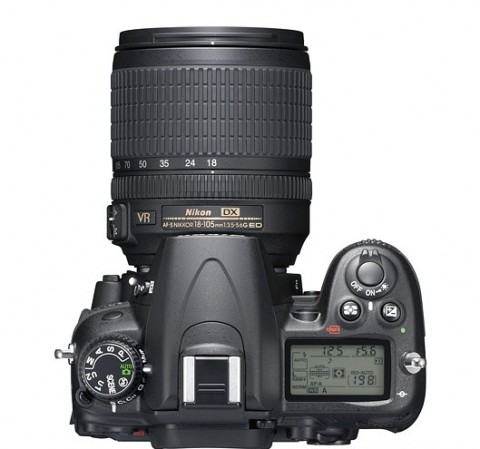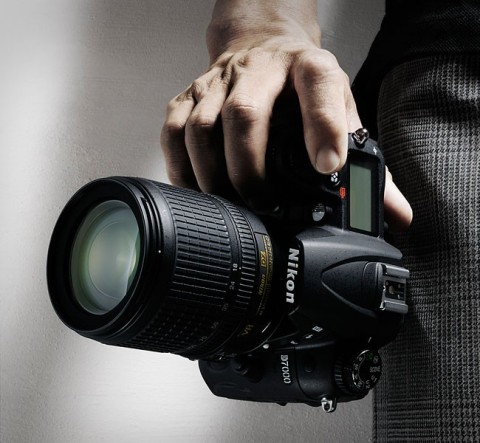The Nikon D7000: Full Comprehensive Review
Here it is, the new Nikon D7000. It is the newest camera from Nikon, a DSLR camera with a 16.2 megapixel DX image sensor. It also has Full HD video and full-time autofocus and manual exposure control. The ISO range of the camera is about 100-25600.
It also has other features such as 2,016-pixel Color Matrix metering system, a new image-processing engine called EXPEED 2, new 39-point Auto-focus system with 3d tracking and dual memory slot cards. But that is enough with the specifications.
Nikon D7000
All I can say is that the camera is a bit expansive as it costs about $1199.95 the body and, if you want the special lens called the AF-S DX Zoom-Nikkor 18-105mm f/3.5-5.6G ED VR then you have to pay a bit more as it will cost $1500.
Nikon D7000
In the following paragraphs I will try to explain what is new in the camera, what is the difference between it and its competitors and, of course, if you should buy it. Therefore, the new camera from Nikon is of average size as it is not that big nor it is too small. It follows the general design Nikon uses on it cameras. The camera has a lot in common with the D90 and the D300 models but also many differences. It is considered by many professionals to be more practical, cheaper than the D300, and more sophisticated to use than the simple D90. There are many design elements that are taken from other cameras Nikon made so the camera will look fairly common. The camera borrows a lot from previous models such as the D300 but is more refined. The color is black and the plastic seems to be high quality.
We will talk a bit about physical elements and the general accessibility of the camera. The 18-105mm f/3.5-5.6G ED VR lens comes with the camera, if you choose to purchase it. It seems to be made from high quality material as it fits perfectly where it should and seems very robust in general. As a notable feature, it has a thing called Vibration Reduction, which seems to do its role very well and in general, the lens that comes with this camera left me a very good impression. I think I can recommend the lens to anyone who never owned a Nikon lens.
Nikon D7000
Nikon D7000’s body
The Body of the camera is made from good materials and the buttons seems to be very well fixed in their place. They are easy to use and each of them is placed in the place where it should. In addition, the buttons do not make any noises so the camera seems to be fairly silent. It also has a Quiet mode which is good, basically, if you try to photograph an animal or something like that.
The camera, like the Nikon D90, has two control wheels. They are very practical made and Nikon seems to be applying the same formula it applied at every camera it made. There are buttons for almost everything such as white balance, metering and AF mode. There is also a switch for Live View, a feature we will discuss later in the article and the Movie Mode button. Don’t worry, you will not be troubled by so many buttons as every button has it place and you will adjust to it in no time. If you are an old Nikon user, it is even easier to adjust as the camera retained all the key features that made the other Nikons so popular. Overall, the part of accessibility of the camera left me a very good impression.
Nikon D7000 on your trip
If you plan on using the camera on your trip or on a place where you will not have electrical current for long, do not worry as the camera is very energy efficient. The battery used in the camera is very solid and it also comes with a recharger. You can expect the battery to resist some time, but it matters a lot if you use the camera actively or not. There are many options you can use to decrease energy consumption such as deactivating the LCD screen.
Nikon D7000
Nikon D7000’s storage space
The camera has a lot of storage space, thanks to the facts that it can have up to two cards which can be of SDHC or SD format. This means you can have double the memory of a normal camera which is very useful if you don’t have a computer near you or you need to take many high resolution pictures or movies.
Nikon D7000
When you are considering sensor, the camera sports an impressive 16.2 CMOS chip which can provide Live View, Full HD. What is the most interesting about the sensor are the new technologies that come with it. You can select an option that will cause the sensor to vibrate at high-frequency. This can remove any particles of dirt from the sensor and leave the sensor pristine clear. This cleaning can be done when you start the camera or when you shut it down. It does not take longer to start if you use this cleaning option. The power of the sensor requires new tools so the camera comes bundled with a new EXPEED 2 processing engine.
Nikon D7000 scene selection
Many photographic modes and scenes can be selected by simply turning the shooting wheel. There is also a small LCD screen on the rear, which shows all the info regarding the settings of the camera at that time. It is a good addition to all the other features of the camera. However, the camera has a monitor in which you can see what you are going to photograph. It is a high quality screen with a 920,000-dot resolution. It has all the information you could possibly ask for and is very customizable.
The camera has an auto-focus system, which has seen improvements over the older ones. It is much easier to focus on an object now as the all kinds of lines and dots will appear on the screen to guide you. The camera seems to know how to display information as symbols will appear when you the battery is low or when you did not insert the card. The auto-focus system is very solid, and mostly it will focus on the subject.
Nikon D7000 and 3D tracking autofocus
You can have auto-focus automatically or you can configure it yourself. It is better if you configure it yourself as you have lots of options to select. You can select a dynamic area or a 3d-tracking AF. But the best it is to select a single-point. When you do so, you get the opportunity of selecting from each of the 39 auto-focus sensors. There is also dynamic-area auto-focus. You can select a point there too but the camera will still use a complicated algorithm to focus if the object moves or something like that.
The 3D focusing mode is even better. It attempts to track the subject while it moves. Mostly, it works great and that says many things. Selecting the modes for the auto-focus is done by pressing on the AF button and then rotating the control wheel. Overall, the autofocus left me a great impression.
Nikon D7000
The flash of the camera is very good. If you use automatic mode, the camera will simply use flash when the software believes that there is not enough light. Of course, you can also set it manually. An interesting feature is the possibility to control the action of a small group of wireless flash units. There are many things you can put the slave flash units to do, including being a light source or flashing or simply moving.
Of course, no DSLR camera would be complete without Live View. There is auto focus when using Live View. There is manual auto focus and automatic auto focus. Nevertheless, the automatic auto focus is not very good. It lags when trying to focus and when there is low light it performs even slower. To avoid this you will have to use manual auto focus. I certainly would not recommend use automated AF when trying to take a photo fast using Live View.
Nikon D7000’s LCD
You can choose what information you would like displayed on the LCD screen and which not, so you will not clutter the screen with useless information. You can also turn on a shooting grid like the one you can see in the optical viewfinder and the new virtual horizon, which can keep your images straight. I thing witch I personally do not like is the fact that there is no live histogram so that means no live history. That is an issue that will affect the Live View a lot and many people who were planning to buy this camera just to use live view will most likely be turned off and buy another camera.
The camera includes many retouching tools. There is incorporated software for red-eye correction, trimming, monochrome conversion, different filter effects or image resizing. Perspective control, lens distortion and straightening of crooked pictures are also treated. I think the camera comes with a lot of software and that is a big plus in my book.
Those of you who would like to see the pictures on a computer must know that the camera supports USB and Mini HDMI as well as accessory terminals for the connection of external microphones. You can even connect a GPS unit. Transferring files from the camera to the computer is a very easy process and does not require many technical skills.
Nikon D7000’s image quality
Nevertheless, what sets this camera apart from other cameras is the great quality of image. A high resolution and a vast palette of colors add to the quality further more. When trying to take pictures, you should turn down the ISO as low as possible if you want high quality pictures without noise. Noise can affect the quality of the image very much. Also resolution is a very important factor. When you are trying to take small pictures, for example for web or for printing purposes, you should try to use a smaller resolution, to conserve space. For a big picture then you must use a resolution as high as possible so the quality will be best. In this camera ISO within the range of 100-1600 are best while ISO 3200 is ok. Anything higher than that will make the noise pretty ugly.
The Nikon D70000 is a must-have for every one interested in taking pictures at night. The quality and sharpness as well as the brightness are excellent. Image stabilization is done using Nikon system called Vibration Reduction. Using it, you can take very good photos even if there is trembling in your hand, the quality of the image will not be affected.
D-lighting is another tools made by Nikon that attempts to make the picture better by using HDR into the JPEG. This can make the pictures more real life and the lightening realistic. Here are some pictures that show differences between the various levels of quality.
Final words about Nikon D7000
So, in the final paragraph I will be presenting my final opinion on the Nikon D70000. I think it is one of the best cameras in its class. It has an excellent image quality and a huge resolution thanks to the 16.2 megapixel sensor. The design and material are excellent, the accessibility is good and the manual provides a lot of information. I did not like the auto focus sensor while using live mode. It is too slow. In addition, the LCD is fixed, and most of this camera competitors have mobile screens. The ViewNX 2 editing software offers no control over noise reduction. You can only record 5 minutes of high definition video even if you have memory for more. The main rival of the Nikon D70000 is the Canon EOS 60D. The Canon has more functionality and better autofocus but the Nikon D70000 has superior image quality.
In conclusion, I would recommend this camera to anybody who had a Nikon before and I would say that choosing between the Nikon D70000 and the Canon EOS 60D is a question of use. If you need autofocus in Live View or a mobile LCD screen, stick to the Canon. On the other hand, if you want control, a solid body and sharp and clear pictures take the Nikon. You will not regret.
Nikon D7000

